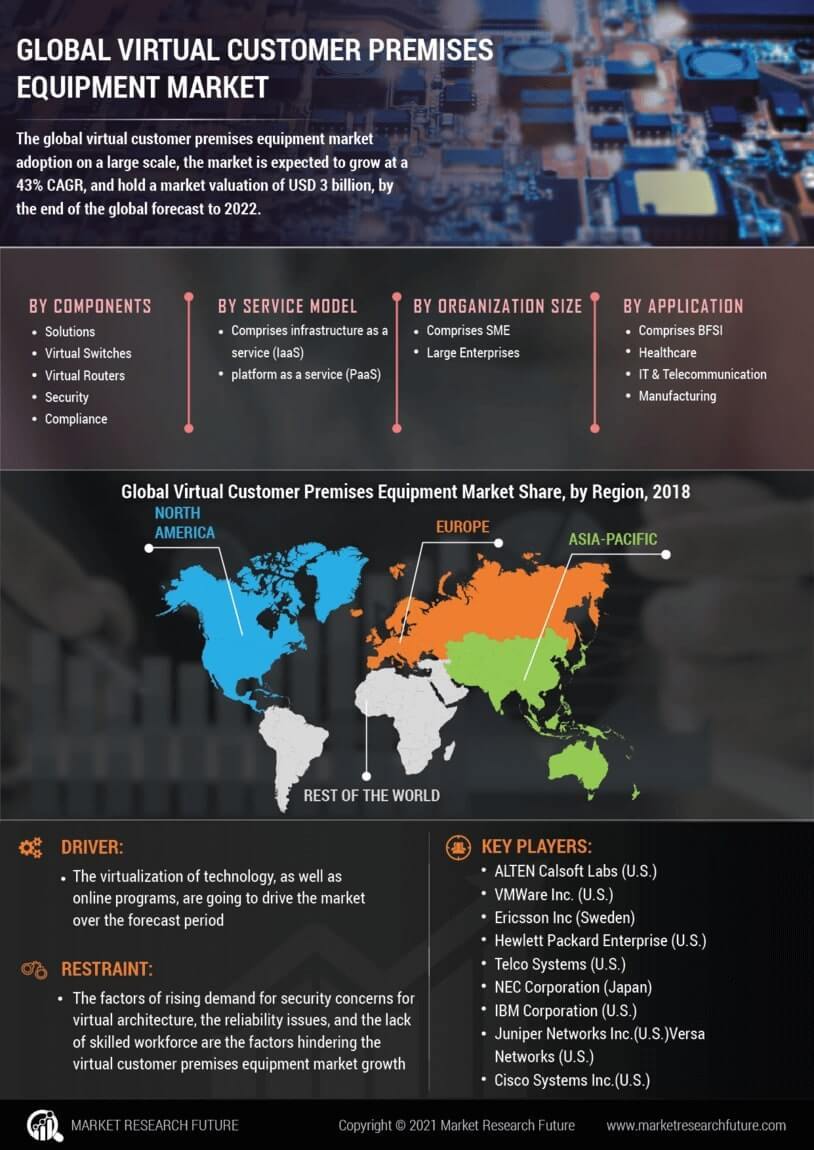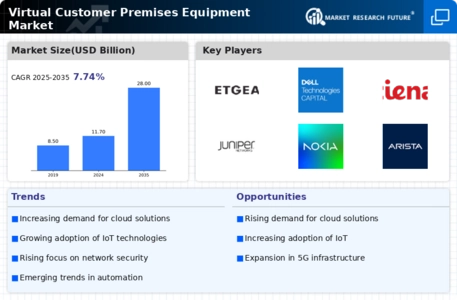Increased Focus on Cost Efficiency
Cost efficiency remains a pivotal driver in the Virtual Customer Premises Equipment Market. Organizations are increasingly recognizing the financial benefits associated with virtualized solutions compared to traditional hardware. By adopting virtual customer premises equipment, companies can significantly reduce operational costs related to hardware maintenance and upgrades. Recent analyses indicate that businesses can achieve savings of up to 30% by transitioning to virtual solutions. This financial incentive is compelling, particularly for small and medium-sized enterprises that may have limited budgets. As the demand for cost-effective solutions grows, the Virtual Customer Premises Equipment Market is likely to expand, attracting more businesses seeking to optimize their expenditures.
Growing Importance of Network Security
The emphasis on network security is becoming increasingly pronounced within the Virtual Customer Premises Equipment Market. As cyber threats evolve, organizations are compelled to adopt robust security measures to protect their data and infrastructure. Virtual customer premises equipment offers enhanced security features, such as integrated firewalls and intrusion detection systems, which are essential for safeguarding sensitive information. The market is responding to this demand by developing solutions that prioritize security without compromising performance. This trend indicates that the Virtual Customer Premises Equipment Market will continue to innovate, focusing on providing secure and reliable solutions that meet the stringent requirements of modern enterprises.
Advancements in Virtualization Technologies
Technological advancements in virtualization are playing a crucial role in shaping the Virtual Customer Premises Equipment Market. Innovations in software-defined networking and network function virtualization are enabling organizations to deploy virtual customer premises equipment more efficiently. These technologies facilitate the integration of various network functions into a single platform, reducing the need for multiple hardware devices. As a result, businesses can streamline their operations and reduce capital expenditures. The market is witnessing an influx of new players offering cutting-edge solutions, which is likely to enhance competition and drive further innovation. This dynamic environment suggests that the Virtual Customer Premises Equipment Market will continue to evolve rapidly, adapting to the needs of modern enterprises.
Rising Demand for Flexible Network Solutions
The Virtual Customer Premises Equipment Market is experiencing a notable surge in demand for flexible network solutions. Organizations are increasingly seeking to adapt their network infrastructure to meet evolving business needs. This shift is driven by the necessity for agility in operations, allowing companies to scale their services efficiently. According to recent data, the market for virtual customer premises equipment is projected to grow at a compound annual growth rate of approximately 15% over the next five years. This growth is indicative of a broader trend where businesses prioritize solutions that offer both flexibility and cost-effectiveness. As enterprises transition from traditional hardware to virtualized solutions, the Virtual Customer Premises Equipment Market is poised to benefit significantly from this transformation.
Expansion of Internet of Things (IoT) Applications
The proliferation of Internet of Things (IoT) applications is significantly influencing the Virtual Customer Premises Equipment Market. As more devices become interconnected, the need for efficient and scalable network solutions is paramount. Virtual customer premises equipment can facilitate the management of vast networks of IoT devices, providing the necessary bandwidth and connectivity. This trend is expected to drive substantial growth in the market, as organizations seek to leverage IoT technologies for improved operational efficiency. Analysts predict that the integration of IoT with virtual customer premises equipment will create new opportunities for innovation and service delivery, further propelling the Virtual Customer Premises Equipment Market into the future.

















Leave a Comment